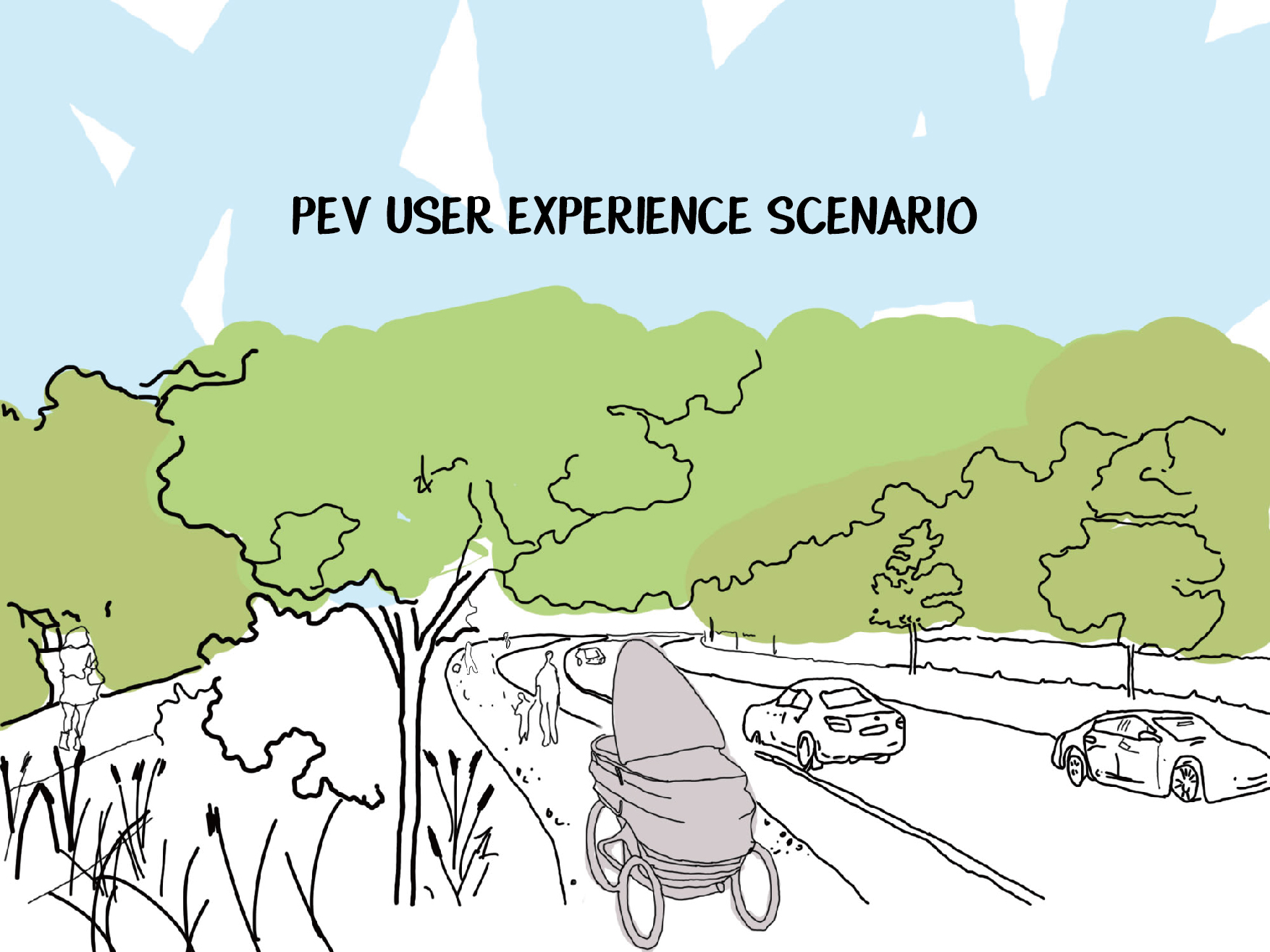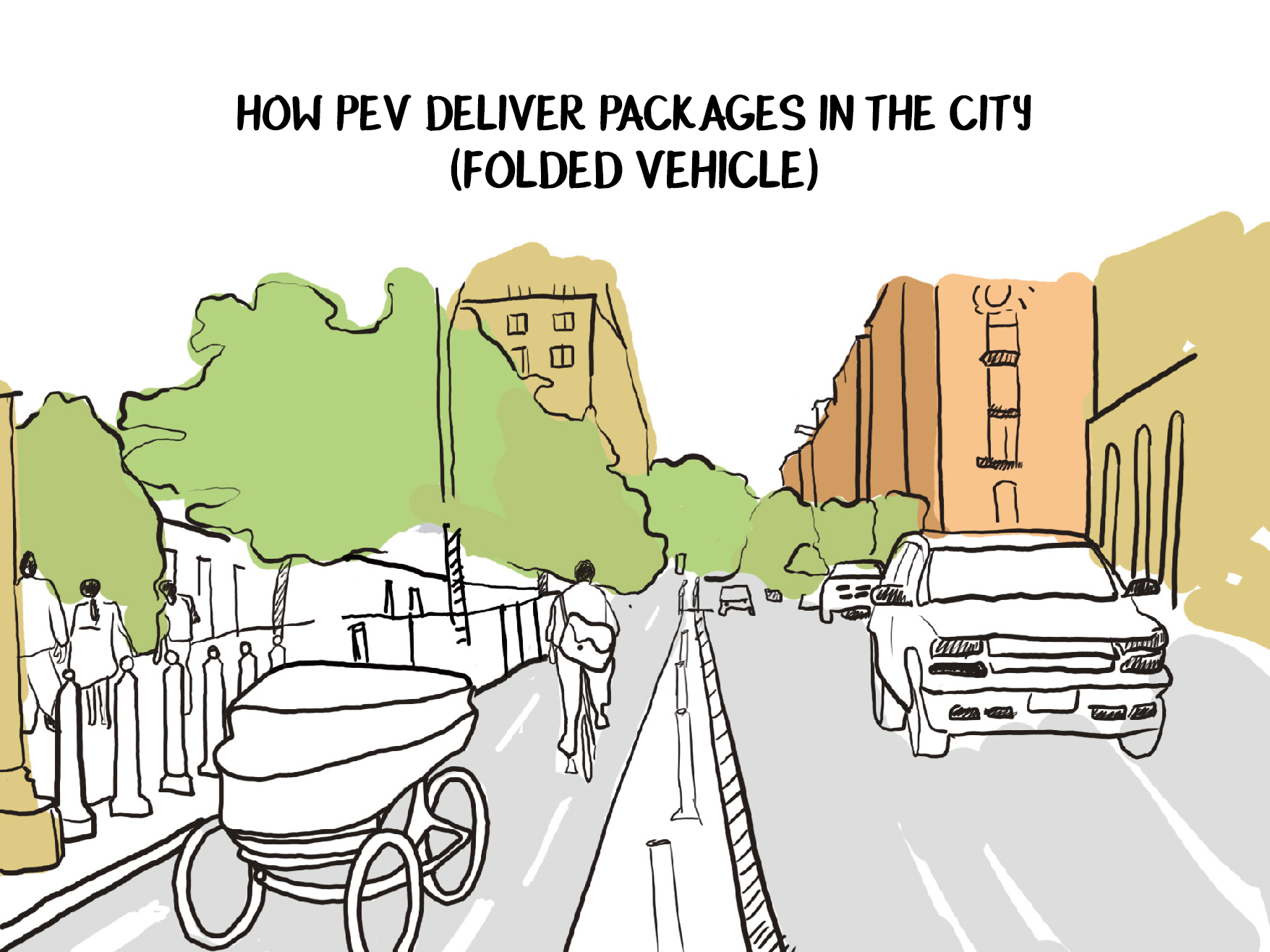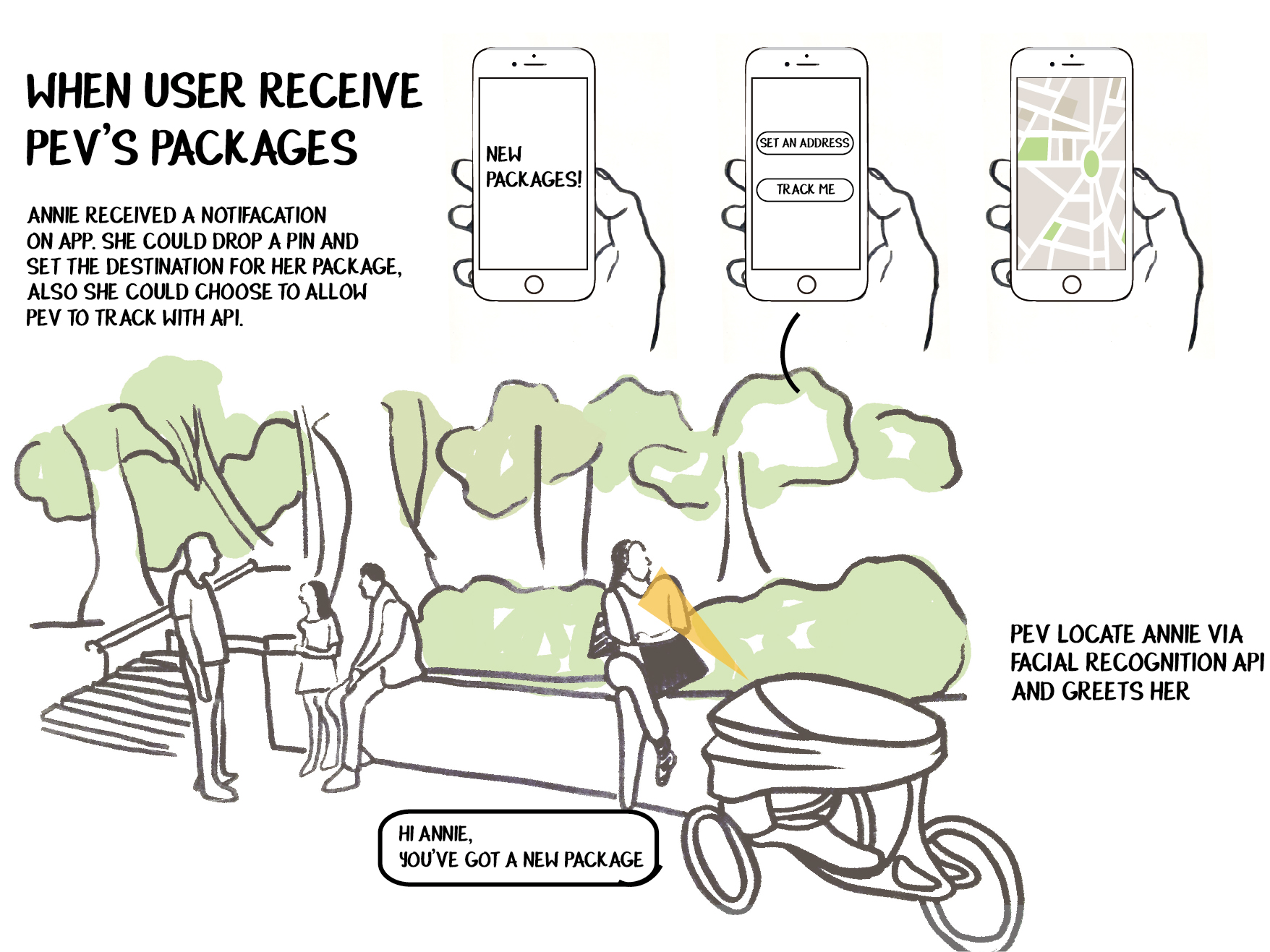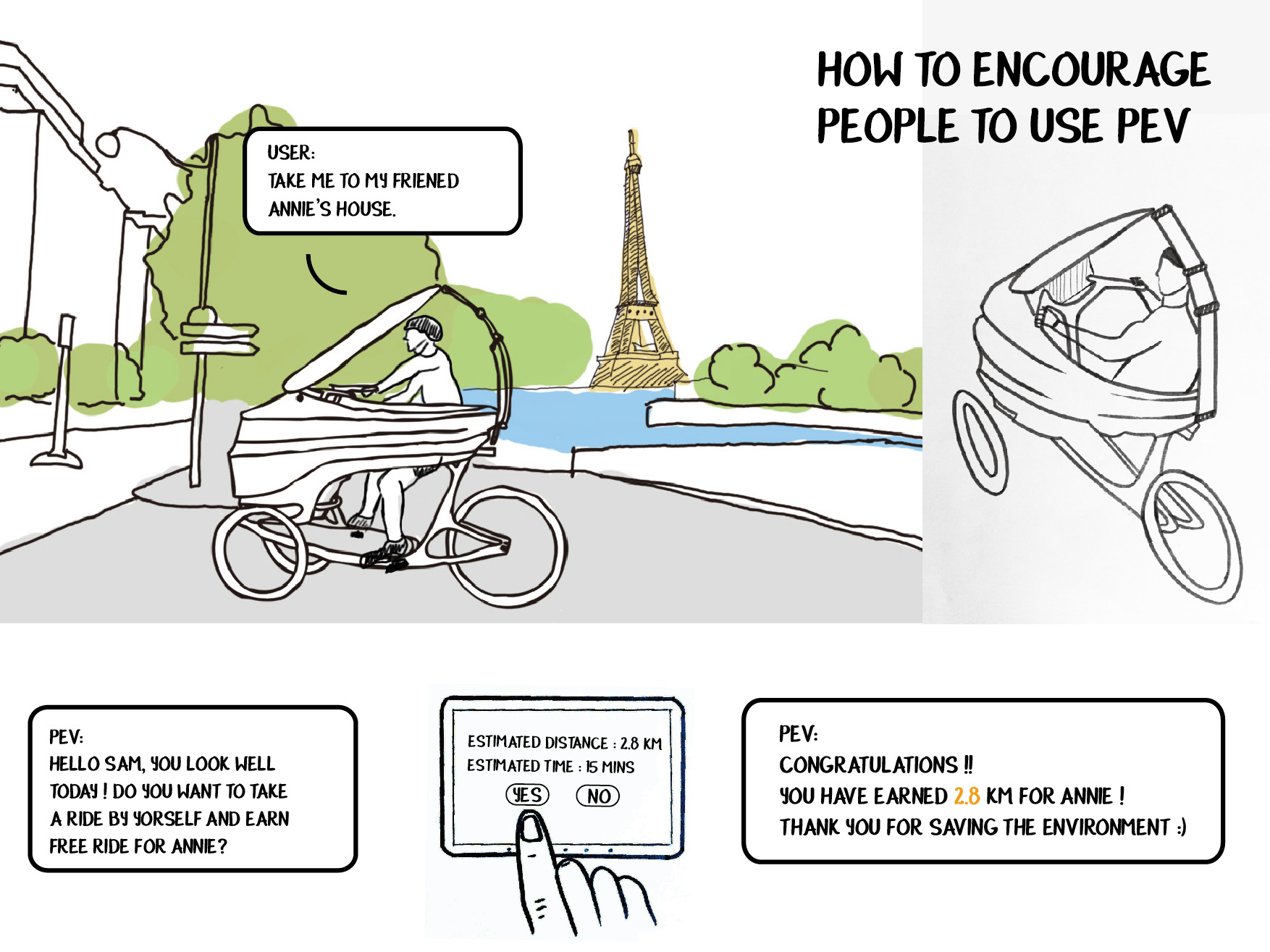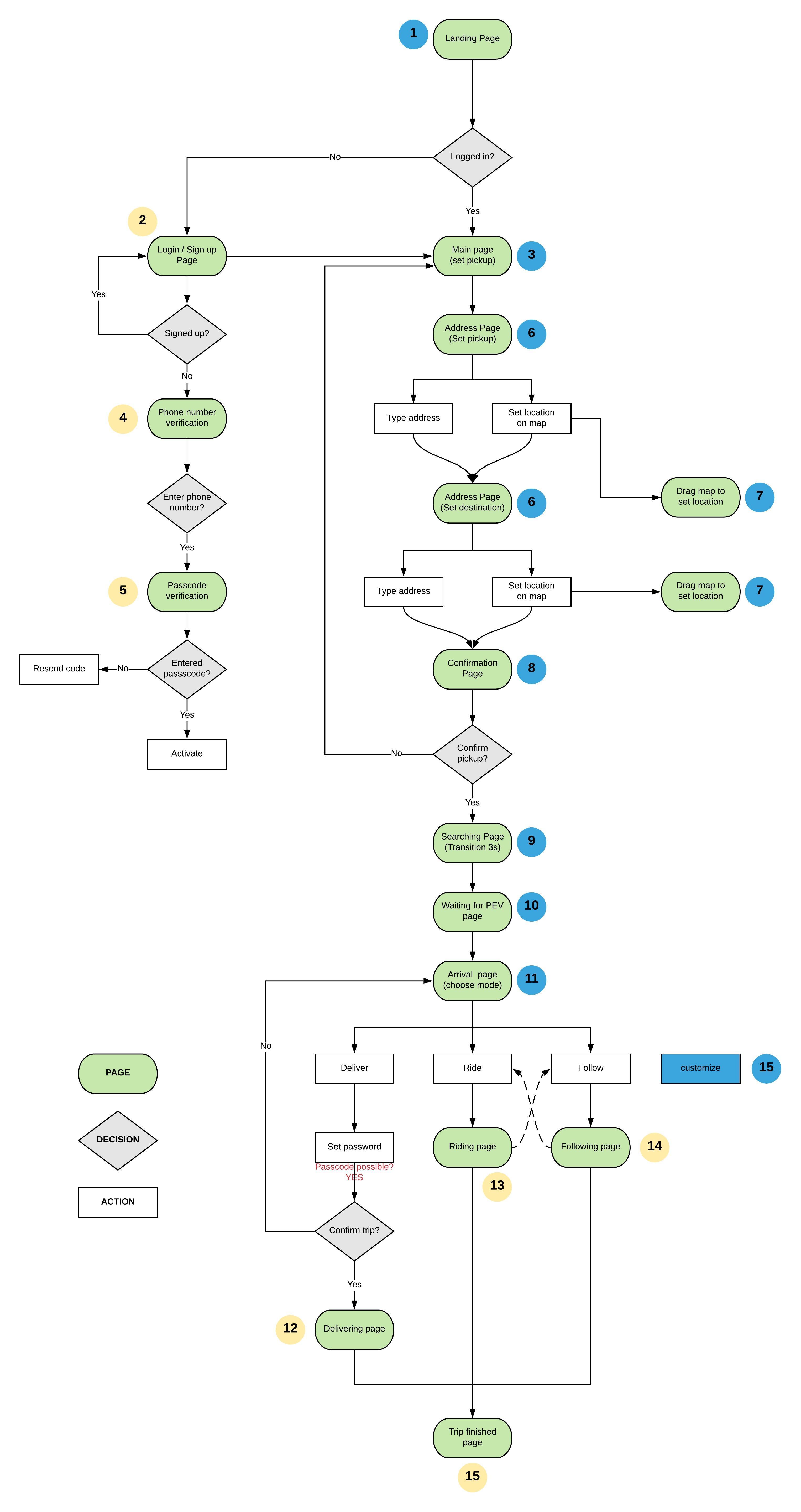Problem
For a future mobility platform such as the PEV, what will the experience be? What type of features can we implement in the mobile application for user to interact with the vehicle?
PEV mobile application experience
As this project has pending patents, I can only show part of the design here. Please contact me directly if you wish to learn more about it.


Introducing the PEV Donkey Mode
The Donkey Mode utilizes Ultra Wideband sensor and allows PEV to follow the users, helping them carry groceries or bags. Watch the video (live demo) and the mobile app wireframe for more details.
